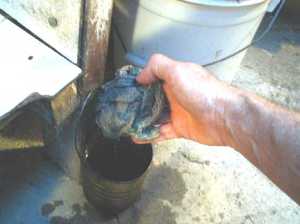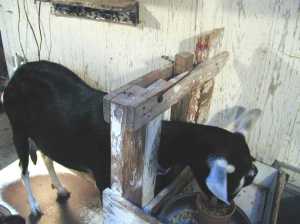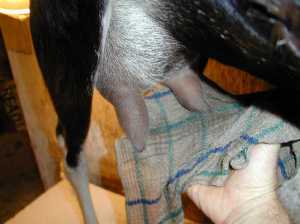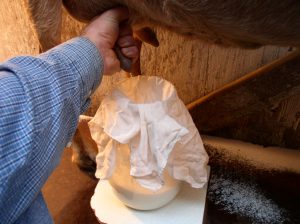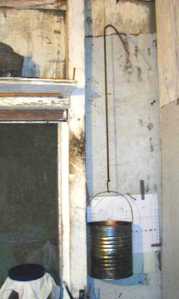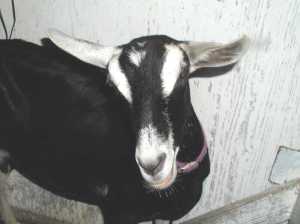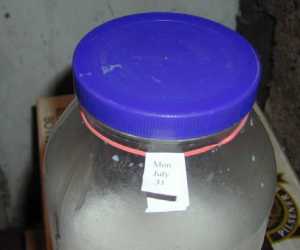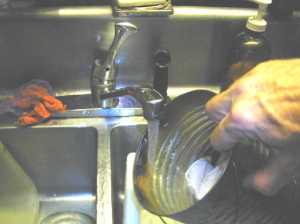…or Controlling the Funkiness of your Cheese
The most important consideration in good flavored milk and milk products is the proper handling of the milk from the time it is milked out to the time that it is consumed or made into cheese. It makes me wonder about commercially available goat’s milk, which in my experience has a strong “goaty” flavor. The goat’s milk I produce only has had such flavor problems if the steps given below were not followed. Many people who say they hate the taste of goat’s milk are usually referring to ‘store-bought’ goat’s milk, and find mine mild, sweet and rich. Likewise, many commercial goat cheeses taste like they were cured in the billy pen… NOT to my liking.
Here are the critical factors I have discovered over a couple of decades of keeping goats and making cheese. All of these are aimed at keeping bacterial contamination as low as possible. Undesirable bacteria are what make milk products have an off flavor. The goal in cheese-making is to add beneficial bacteria which produces good flavor while avoiding the rest. Undesirable bacteria abound on goat hair and dander. Removal of these is the goal of careful filtration.
Never try to make cheese out of “turned” or spoiled milk–the unpleasant flavor will linger. Feed it to your pets if they will drink it. Otherwise, put it on the compost pile.
Note that repeated reference is made to complete drying of thoroughly cleansed equipment. The reason is that most bacteria do not survive well on clean dry surfaces exposed to the air.
Avoiding Bacterial Contamination in your Milk Products
Cleanliness/Sterility of Milking Cans and Storage Bottles:
- Immediately after milking, rinse equipment in lukewarm water to remove the majority of milk. If you let the equipment sit, the drying milk will glue itself in the cracks and crevices, and will be come a breeding ground for bacteria.
- You should carefully wash the rinsed milking cans in very hot soapy water, rinse well, and air dry COMPLETELY. (Do not dry with a towel, it is easy to introduce bacteria this way.) If you have no problems with odor or taste in your milk, actually sterilization of the cans may not be required. But if you are having problems, your implements should be boiled and air dried. I avoid chlorine because of its poisonousness, but in the worst cases, may have to be resorted to.
Essentials of Recommended Cleansing:
- Wash implements well in very hot water and soap
- Rinse thoroughly in very hot fresh water
- Ensure that they are thoroughly air dried before using
If you must use chlorine for sterilization, use as little as possible, and avoid any trace in your milk.
Stages of Milk Handling
I. Setting up Milking Equipment
II. Setting up Goat to be Milked
III. Cleansing Udders
IV. Milking and Feeding
V. Filtering and Recording
VI. Chilling
VII. Cleansing Equipment after Milking
Keep the milk chilled at 4ºC until ready for use. Do not add warm milk to previously chilled milk. It will encourage any bacteria in the older milk to grow. However, once thoroughly chilled, milk from sequential milkings can be pooled.
Follow these steps and maintaining a temperature of no more than 4ºC in your refrigerator and your milk should keep easily for more than a week without pasteurization. If goat’s milk is kept this long, cream can be skimmed off when making cheese. Freeze this cream immediately after skimming to produce delicious ice cream.
If you don’t follow these steps closely, you risk a number of bacterial contaminations including those of Salmonella, Escherichia coli and reportedly, Listeria.

